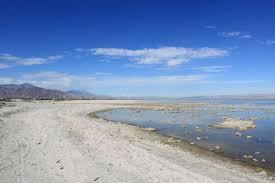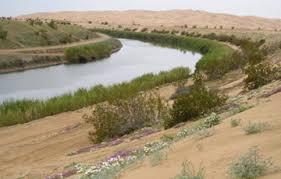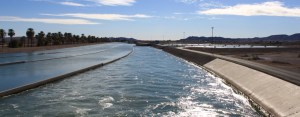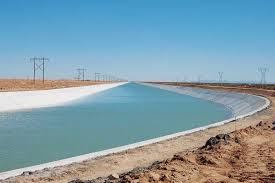What Price Water?
- Malissa McKeith
- May 23, 2018
- 4 min read
Updated: Jan 15, 2020
Since its inception, CURE has worked to draw policymakers’ attention to the environmental, health and economic harm that will result from transferring water from agricultural use to urban areas. Its litigation over the proposal to line the All American Canal in concrete, and its many legal challenges to the landmark 2003 Imperial Valley to San Diego water transfer agreement exposed the many fallacies used to justify those decisions.
Lawmakers and the courts must acknowledge the true costs to communities when water is diverted from rural to urban areas. Including the disintegration of regional agriculture, job losses. and widespread health impacts.
See the 2017 Salton Sea Special Report for an update on the current status of the Salton Sea and the State of California’s failure to comply with its obligation to be implementing a restoration plan as the Imperial-San Diego transfer reaches its full diversion this year.
Like many watersheds around the world, the Colorado River watershed is shared by two sovereign nations with conflicting values and priorities. Since a 1944 Treaty, approximately 90% of the river has been used by seven western U.S. states, with the remaining 10% allocated to Mexico. As a consequence, whatever actions taken in the U.S. affecting the flow of the Colorado River have environmental and human consequences in the Mexican portion of the Lower Colorado Basin.
In the early 2000s, Defenders of Wildlife were filing lawsuits to promote restoration of the Colorado River Delta and CURE agreed to help. The Delta was once described by naturalist Aldo Leopold as “a milk and honey wilderness” and the place of “a hundred green lagoons.” In the 1920s, when Leopold was writing about it, the Delta stretched over nearly 3,000 square miles; by the end of the century, it had shrunk by nearly 90%.
While Defenders and other environmental organizations were litigating, CURE used its contacts to convene a bi-national, multidisciplinary team that met over several months to discuss and propose possible solutions. Environmental attorneys, hydrologist, water experts and water officials from both sides of the border evaluated politically feasible options for transferring water to the Delta in order to facilitate efforts to salvage the Delta’s dying ecosystem and restore important wildlife habitat. In 2000, CURE was instrumental in drafting Minute 306 of the 1944 Treaty recognizing the importance of both countries working together to save the Delta Habitat.
In May 2001, the team’s efforts culminated in publication of a report entitled, Immediate Options for Augmenting Water Flows to the Colorado River in Mexico. Several months later, CURE took part in an international conference in Mexicali, called the U.S.-Mexico Colorado River Delta Symposium, involving concerned government officials, scientists, environmentalists, and non-governmental organizations. The conference aimed to educate participants about Delta-related legal issues and to begin identifying the water needs of the Delta’s precious remaining ecosystem. Unfortunately, the symposium was scheduled to begin on the morning of September 11, 2001, and that day’s fateful events disrupted bi-national progress on the Delta. Not until after 2012 was a deal on the Delta finally reached which was largely patterned on CURE’s original 2001 proposal.
The Colorado Delta proved to be only the tip of the iceberg. With the new century fast approaching, California was being forced to reduce its consumption of Colorado River water, and plans were soon underway to transfer huge volumes of water from the Imperial Valley to San Diego.
The water transfer deal eventually hammered out became known as the Quantification Settlement Agreement (or “QSA”). The agreement called for the Imperial Irrigation District (IID), California’s biggest user of Colorado River water, to sell up to 300,000 acre feet of water per year to the coastal cities of San Diego County. To generate this water, IID planned to take three measures: provide inducements to farmers for following their agricultural fields, institute on-farm water efficiency techniques, and encase in concrete the Imperial Valley’s main water conveyance channel from the Colorado, the All-American Canal.
Prior to enactment of the water deal, CURE proposed a number of modifications to the proposed agreement, so it would be more equitable for all residents of Imperial Valley. CURE advocated that the water transfers take place for a maximum of 15 rather than 75 years to allow a reassessment of economic and environmental impacts before the deal went into full force and effect. CURE also asserted and continues to maintain that less water should be transferred to San Diego County to reserve enough flow to keep the Salton Sea alive. In addition, CURE believes that San Diego should explore practical conservation measures such as low-flow toilets and gray water landscape use for its golf courses and new home systems.
In October 2003, convinced that the State of California would fund the restoration of the Salton Sea, the Imperial Irrigation District approved a version of the 1501-page QSA. A decade of litigation ensued. In 2009, a court invalidated the deal because the State of California’s commitment to mitigate the decline of the Sea was unenforceable. An appellate court reversed and the case was retried. In August 2013, the QSA deal was finally “validated” by Sacramento Superior Court Judge Lloyd Connelly.
This year, the water transfers will go into full effect. Because no restoration plan has been adopted, Imperial and Coachella Valleys, now faced with how to address the potentially severe environmental and health consequences of the water transfer agreement.













Comments